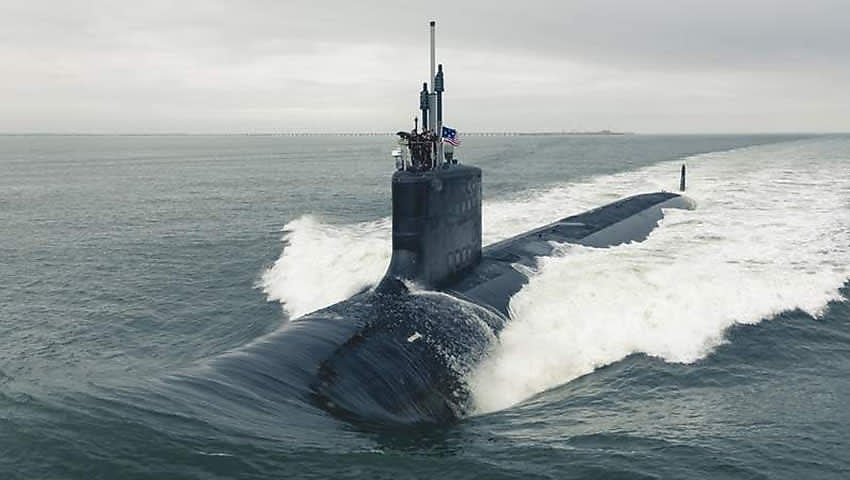The printer was installed upon the USS New Hampshire, with the US Navy explaining that the additive manufacturing opportunities provided by Markforged supported “outside the box thinking” for sustainment.
To continue reading the rest of this article, please log in.
Create free account to get unlimited news articles and more!
The US Navy has welcomed maintenance and sustainment opportunities offered by additive manufacturing products, explaining the capability supported “maintaining forward deployment”.
The Markforged X7 field edition, originally installed on the USS New Hampshire — a Virginia Class attack submarine — in July enabled crew to undergo “self-sustainment” activities including allowing crews to repair items including pipe leaks and enclosures for new electronics.
The 3D printer is a polymer-based additive manufacturing system, which the US Navy explained can print high-durability reinforced nylon.
The capability was developed by the NAVSEA Additive Manufacturing Research and Development Program, with additional help from the US’ Naval Surface Warfare Center and NSWC Carderock and Naval Undersea Warfare Center.
The capability did not require in person training, with crew able to train one another in using the platform.
According to Captain Bennet Christman, Commanding Officer of the USS New Hampshire, the device enables sailors to provide innovative solutions to sustaining defence equipment.
“3D printers provide the opportunity for creative problem solving. These devices lower the barrier for component manufacturing, empowering sailors to take ownership of their repairs, and to think outside the box,” he said.
“Ingenuity and creative problem solving are core to our history as a submarine force. Fostering these values will pay dividends in the way sailors approach all aspects of their jobs.”
The capability is hoped to enhance warfighting readiness and improve naval sustainment.
“The team continues to make progress and we have made significant strides in additive manufacturing that are proving to be very beneficial,” Rear Admiral Jason Lloyd, NAVSEA Chief Design, Integration and Naval Engineering said.
“There is still a lot of work to do in the field, particularly the ubiquitous use of AM for metal construction and repairs.”

 Login
Login







